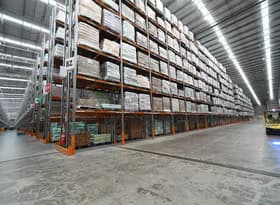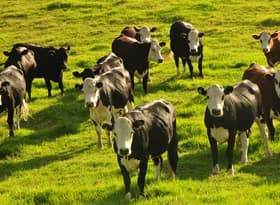
Media Release: Challenging regional economies, primary sector set to drive recovery
Economic conditions remain challenging around the country at the start of 2025, despite some parts of the economy showing sustained but limited growth.
Provisional estimates from the Infometrics March 2025 Quarterly Economic Monitor show underlying quarterly economic activity picked up in the March 2025 quarter, but remains down 1.1% over the 12 months to March 2025 compared to a year earlier.
“Economic activity remains subdued in the first quarter of 2025, with GDP down in every region compared to last year” said Infometrics Principal Economist Nick Brunsdon. “Rural economies are currently New Zealand’s strongest performers, with rural area GDP down just 0.4%pa, buoyed by better prices for our dairy, meat and horticulture exports to offset difficult times in other industries. More urban areas are doing it tough, with metro area GDP down 1.2%pa and provincial areas down 1.0%pa”
Higher primary sector prices are supporting rural cashflows, with beef prices up 15%pa in March 2025, lamb and mutton prices up 10%, and rallying global dairy prices have kept the Fonterra farmgate milk price at $10/kgMS this season. “The primary sector is set to drive the economic recovery in 2025, with higher dairy prices alone meaning a $4.5b boost to rural economies, to a record $19.3b pay-out.”
“Ongoing uncertainty around the impact of US President Trump’s tariffs – on New Zealand and our trading partners – remains a threat. Strong demand from the US is largely behind the 15% rise in beef prices that our farmers are enjoying, but the tariffs could limit this gain in the future depending on how things land. The US has also overtaken Australia as the largest source of international tourist spending in many regions, another area that could be undermined by lower US consumer spending as a result of tariffs.”
Some parts of the economy are still contracting, with lower activity across construction and manufacturing over the last 12 months. Building consents continue to soften, with non-residential consents down 7.2%pa, and residential consents down 3.3%pa. “Households were still pulling back their spending up to March 2025, with Marketview data showing a 1.4%pa decline over the last 12 months. The housing market is starting to turn a corner, but with new listings coming to market faster than they can be sold, house prices are unlikely to rocket up this year. Softer manufacturing, construction, and retail activity means a harder hit for more urban parts of the country.”
Job losses continue to be felt across New Zealand, with employment falling 1.6%pa in the March 2025 quarter. The sharpest losses have been felt in the main centres, with employment falling 2.2%pa in Auckland and 2.3%pa in the Wellington Region. “With a stronger primary sector focus, the South Island is doing comparatively better on the jobs front, and Otago Region leads the pack, with just a 0.2%pa decline in employment.”
“We continue to see small, tentative signs that the economy is at a turning point. The number of job ads has started to plateau, suggesting a turning point in the labour market. Still-falling interest rates will continue flowing through to households this year, but many will continue playing it safe with an uncertain labour market, as the unemployment rate remains high. Economic recovery in 2025 will be starting with a whimper, rather than a roar.”
ENDS
Attachment – map showing employment growth by region
Note:
The Infometrics Quarterly Economic Monitor is a series of reports about local economies, rather than one comprehensive report. This media release provides a high-level overview of trends and changes to regional economies.
More details about the Quarterly Economic Monitor can be found here: https://www.infometrics.co.nz/product/quarterly-economic-monitor




















